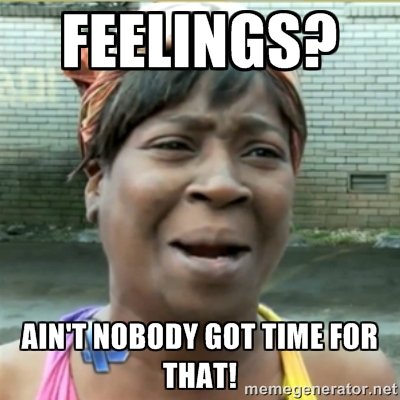An Outline as Road Map to Success! [NaNoWriMo Prep]

NaNoWriMo is about finishing! It is a test of our ability to lay down 1,667 words per day for 30 days even if they are terrible.
If you're like me and you overthink just about everything you can come upon several challenges in your creative ventures. My perfectionism and overly-analytic mind can paralyze me from finishing, or even starting a piece of art.
There is something to be said for 'pantsing it', that is writing by the seat of your pants.

From: https://steemit.com/nano/@reneenouveau/writing-on-the-edge-process-journal-nanowrimo-prep
I first heard of a process journal from novelist, Ruth Ozeki. We were having dinner one night in San Francisco after her book reading and she told me about the radical evolution of the plot of her novel A Tale for the Time Being. Years before the events that made it into the final version of the book, the main character Nao began to speak to Ruth through her process journal. It was her diligent practice at recording her thoughts and creative brainstorming that allowed her to flesh out Nao as a person long before her full story was told. Ruth went through several radically different versions of the same tale and it was her process journal that served as both laboratory and garden to bring the final tale to fruition.
However, we don't have time for that. Writing about our...

You'll have almost 2,000 words to write per day! We can't wait for inspiration, we have to encourage it out with a little thoughtful planning!
The Outline!
One tool that can help you set the framework of your story is the outline. It can help you put in order the parts of your stories. An outline allows me a chance to spot potential hurdles and holes in the plot. An outline alone may not solve these problems but it lets you know they are there!
I'm not a very good 'pantser', as I tend to write fairly dense fiction. I can easily write myself into a corner and I may not have the motivation or creative drive to write myself out. Like looking for plot holes, an outline can help identify these issues before they become a problem.
Outlines can help you link parts of your story together. This is particularly important if you are writing a mystery or a epic multi-book saga. My outline for a 10-part occult steampunk thriller I've been chipping away at is almost a novel in and of itself. These are many many thousands of words threading ideas back and forth through the many books in the series. When I get stuck, my outline is there to rescue me!
There are a few different kinds of outlines you can use to plan your story.

Chronological Outlines
One technique is to break the idea into it's major arcs or acts. This is what happens at the beginning, middle and end of your story.
Taking a page from my own story for November's writing-frenzy we can see how the story breaks down into these three major parts... set up, conflict and resolution.
Act 1: Plastic-eating bacteria goes rouge and begins to convert the plastic of the world to a slippery black ooze. Chaos ensues. Our protagonist, a molecular biologist studying bacteria in Antarctica quickly becomes the only person with the equipment and knowledge to stop the pandemic.Act 2: An airdrop of bacterial samples overcome their best precautions and threaten the equipment and her very life as it begins to consume the frozen base.
Act 3: She decides to sacrifice herself and continue work rather than escaping into the frozen wasteland.
Now that we have the 3 act structure down, we can begin to decompose each act into chapter or scenes. In your outline these will be one or two sentences long. Enough to give you a direction.
Chapter 1: Somewhere in the Pacific Garbage Patch a plastic skimmer runs into a typhoon and the contents of the bacteria resivour onboard spill into the ocean. These bacteria were designed with very short life spans outside of their processing tanks, but a mutation allows some to survive and begin reproducing on the miles of plastic waste.Chapter 2: The bacteria makes landfall in California and Japan and begins reducing the plastics in daily life to a slippery, viscus, carcinogenic and highly flammable black ooze.
Chapter 3: Our protagonist catches wind of the epidemic on the Steemit blog of her estranged husband who works on the moon. He is more in touch with things going on this world that she is. She reminisces about their lives up to this point and the conditions that deposited her deep within Antarctica working alone to sequence the genome of long extinct bacteria frozen in ice core samples.
I'm barely touching the action in the Chapters, but now I have a direction to write towards when I sit down at the keyboard. As the story unfolds in the minute details that make it interesting and unique I may find that one chapter becomes two or that one chapter is subsumed by another. Your work will take on a life of its own and you may find yourself revising mid-month. Yet, you'll still be moving forward!
Once I have this framework I don't have to agonize over the structure of the drama. It frees up my brain and fingers to write. Writing, actually doing it is the one and only key for writings. NaNoWriMo is no exception. You'll need all your tenacity to move from Word #1 to Word #50,000.
Seed Scene
Another kind of outline can be useful for authors who have one or a couple scenes heavily imagined. These scenes act as seeds and with your outline you'll work backwards and forwards to frame them in the structure of your story. What action took place to bring about the events that you see so vividly? And what are the repercussions of the outcome of these same events? Maybe you have a clear idea of the climax of your story. The heroine huddling in an ice cave as the plastic-eating bacteria eats away at her artificial heart? Although you can describe in vivid detail the contents of this interaction the scene floats nebulously in an unstructured vacuum. Allow this seed to grow, to put down roots (What brought her to the ice-cave? Why does she have an artificial heart?) and to sprout tendrils and leaves (What does she resolve to do? How do her actions affect the future of the story? Soon your seed scenes will grow together and you'll see how the plot progresses.
A Mind Map
Mind Mapping is a kind of non-linear outline. You can mindmap plot ideas, characters and scenes and then organize them into a bigger picture. This is also a good tool if you haven't decided upon the outcome of a scene or decision and would like to see how the different 'timelines' might affect your story. The key here is that it's a non-linear outline so probably not best for those people who want to describe a story from beginning to end.
The Synopsis
This technique is a good pre-writing step for all writers, but can also serve as an outline for when you sit down to write. For a synopsis, you'll write a condensed summary of your novel. It's a representation that you can then dive into and expand to include the countless details that your story will eventually contain. Writing a synopsis might be a precursor to another outlining method or a way to summarize what you've written for your process journal as kind of a reverse outline.
Whatever technique you use you'll find that investing some time to look at your story as a whole before you start writing can help you succeed!

NaNoWriMo!!!! 6 weeks away! Come join a Steemit writing team!

NANOWRIMO! Word-count Calendar! Steal this Calendar!

NaNoWriMo Tools - Preparation - Mind Maps and YOU




This introduced me to NaNoWriMo concept. Excellent tips here for the month and just how to get over yourself when writing in general! glad you posted and thanks to friends who shared this so that I found it in my feed. Following you now. :)
YAY! Another WriMo participant!
I was busy on the forums last night welcoming people who are starting to filter in now that we're just over 2 weeks before launch. So much prep to do but I'm thinking of killing two birds with one stone. I'm writing my 2000 words a day and posting the story progression (aka white-hot mess) here on Steemit. My plan? Just envision throwing spaghetti at the wall and hope something sticks. I guess we could call that word splatter. LOL
What region are you in?
That's exactly what I'd envisioned using the platform for! It allows us an audience to write for and keeps us accountable. I hope that everyone will make a post about their writing goals for the competition (if they are doing less than the 50k) and use a post to share their daily labour. It can be scary to share without editing, but also allows us to reward each other with upvotes and comments and the authors can seek feedback as they write.
We can support each other.
I encourage everyone to use part of their daily writing post as a process journal entry to write about their writing for the day.
come join us in steemit.chat at #nano
I'm in Santa Cruz, California.
This is my first year as a volunteer Municipal Liaison for the Florida:Elsewhere group. We simply don't have enough people to make local write-ins worth the time and effort so I'm organizing some Tweet chats and maybe a google hangout for the non-steemit peeps in my region.
Did NaNoWriMo two years ago. It was brutal, but I finished :). On the fence about this year... Either way, upvoted.
Please share your advice and experience in a post! Use the tag #nano and join us this year!
Starting November 1st? Not long to go!
This post has been linked to from another place on Steem.
Learn more about linkback bot v0.4. Upvote if you want the bot to continue posting linkbacks for your posts. Flag if otherwise.
Built by @ontofractal
Included in Steemprentice Spotlight 200+ member edition :)

Tweeted by SteemLand
well